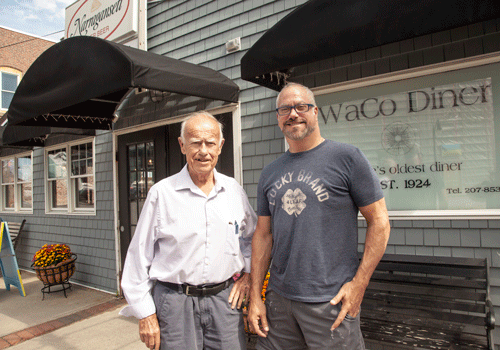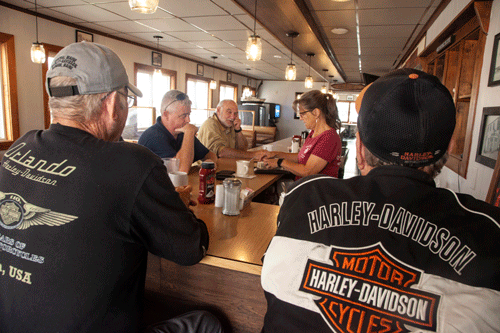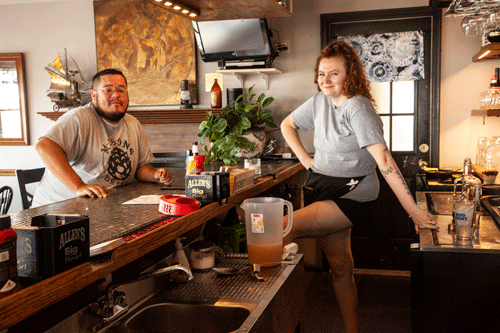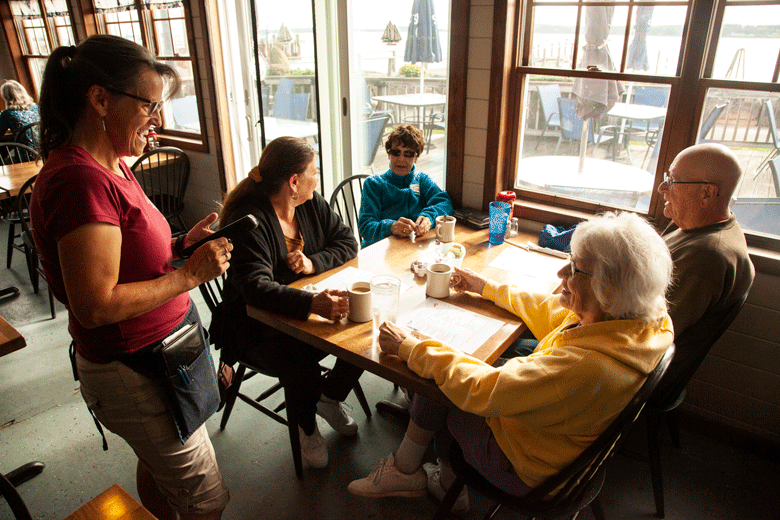
When Nelson Watts and Ralph Colwell purchased a lunch wagon in 1923, took it off its wheels, and declared it to be the WaCo Diner, they couldn’t have known that almost 100 years later, it would still be going strong in Eastport, and that it would be Maine’s oldest diner.
Before it became the WaCo, the wagon was a traveling photographer’s studio. In 1919, Eastport resident Winfield Cummings purchased it for $100, or about $1,713 in today’s currency, and planted it in Bank Square, likely seeing the potential of the busy downtown foot traffic and the growing number of visitors by sea and rail.
In 1923, Watts and Colwell purchased the lunch wagon exactly where it stood and turned it into a more permanent structure by boxing it in. With that, the WaCo Diner was born, the name derived from combining syllables from the surnames of its new owners.
The first published record of the WaCo comes from the Eastport Sentinel on April 23, 1924: “The recently purchased lunch cart of Ralph Colwell, near Bank Square, is a popular place for those looking for a quick lunch and home-cooked food.”
At the time, Eastport was both similar and very different to how it appears today. More than a dozen sardine factories were in full swing when the WaCo opened, and the Acme Theatre was doing steady business a few blocks down on Water Street.
The city’s 4,500 residents commonly filled the streets, frequenting the dozens of businesses and grocers lining the downtown—some of which offered the hottest fashions from Boston and beyond.
The slow decline of the sardine industry over the next several decades, combined with the urbanization of the country, saw a similar decline in population and activity in Eastport. The closure of Eastport’s last sardine factory in 1983 marked the end of an era for the city.
For the WaCo’s part, being a stalwart operation in the heart of an enduring community has continued to be in its favor. The diner has long been a favorite of locals and a curiosity for visitors, some of whom have been treated to the sight of passing whales in tandem with their breakfast, lunch, or dinner fare.
In the early 1960s, the longtime cook at the WaCo, Elliott Thompson, bought the diner and had the New WaCo Diner built around 1970. The decision to reinforce the structure’s permanence by removing the original cart frame and create today’s more traditional building may well have saved the diner from the Groundhog Day Gale, which devastated a number of downtown buildings in 1976.

When Thompson passed away, his widow Lena owned it, and then their three children—Barry Thompson, Betty Ferguson, and Patricia Magoon. Barry Thompson remembers that all of the people who worked around the Bank Square area would eat at the diner, including workers from the Argenta Pearl Essence factory, the Mearl’s Sea Street plant, and Jacobson’s wreath-making shop, along with all of the businesses there, like the A&P and Western Auto. Canadian fishermen from Deer Island, Campobello, and Grand Manan were also frequent customers, and many would come over on Saturdays.
“Once the businesses left town, it got slow in the wintertime,” Thompson remembers. “They had to start catering to the tourist trade.”
The three Thompson children sold the business to Nancy Bishop, and later it was run by Dermot and Magaly Healy, then Bob del Papa. Each had their own relationship with the diner and the community that surrounds it. Its long-standing reputation as a reliable place for decent meals has been a point of pride carried from owner to owner.
“When I bought it, it was told to me that it was the oldest [diner in the state],” says Bob del Papa. “There were others in the state that were close, but this was the oldest.”
Like many area businesses, the WaCo endures in the hands of family. Bob’s son Michael del Papa is continuing the legacy of traditional Downeast meals in a historic spot as the diner’s newest owner. Descendants of the original founders, Watts and Colwell, still live in the area and frequent the diner, adding to its story—a meal, a day, and a year at a time.
This story first appeared in The Quoddy Tides and is reprinted with permission and gratitude.






